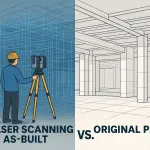Capturing the smallest details with precision and accuracy
GEOSlam is a digital 3D mapping company that went to Alberta Canada to map out the world’s most giant dinosaur. One team member was able to scan the entire dinosaur to create a digital replica that has now taken the world by a storm. They were able to create this copy that was so precise and accurate with the help of 3D laser scanning. This is some of the trendiest technology in the world and has let us gain access to some of the most historical objects.
This is one of the largest dinosaurs that have entered our museums, and one of the most well-preserved artifacts we have come across. GEOSlam has found a way to allow citizens to view this fantastic dinosaur online but also in detail that we have not been able to access before 3D laser scanning. This dinosaur is five times larger than any other t-rex and worth over one million dollars.
3D laser scanning was not always used to gather information or used by researchers. It was a very slow adoption of the technology. However, many museums are now using it to give access to specific museum displays entirely online. It is allowing guests to interact from a safe distance but still be able to view something in detail.
How 3D laser scanning works
This technology has been around since the 1960s but was not adopted until the 1990s. The first few 3D laser scanning devices were not what they are now. They are now hand-held devices and larger body scanning devices that can be used for many things.
In this case, the GEOSlam team member used a hand-held device and was able to scan the large dinosaur by simply walking around the entire body. The best thing about this device is it picks up every microscopic detail that would normally take hours to capture.
3D laser scanning works by taking hundreds of pictures per second while shining a laser beam on the object. The light is being measured as it bounces back and forth from the object to the device. This technology can pick up things like texture, size, dimensions, color, dents, scratches, and anything else that needs to be seen clearly for studying.
The best thing about this technology is it is noninvasive, accurate, faster than any other technology, and budget-friendly. Due to all of these advantages of using this technology is growing in other fields rapidly, and is being used to keep track of changes, and keep accurate records of things.
Final Thoughts
There is no doubt that 3D laser scanning will allow us to gain access to things we would typically never acquire. It will allow guests at a museum to go completely virtual and yet still see artifacts in great detail. We will be interacting with history in the most advanced way possible, and we will be able to learn more than we ever thought possible.
This technology has changed our world and continues to shape how we learn. We are using this information to gather and share research. It is being saved in a place where it can never be deleted, making it one of the best tools for future reference.







